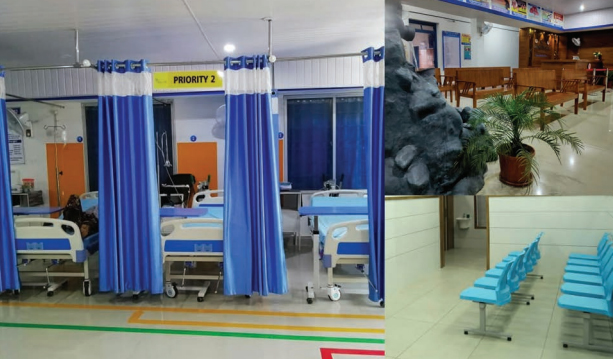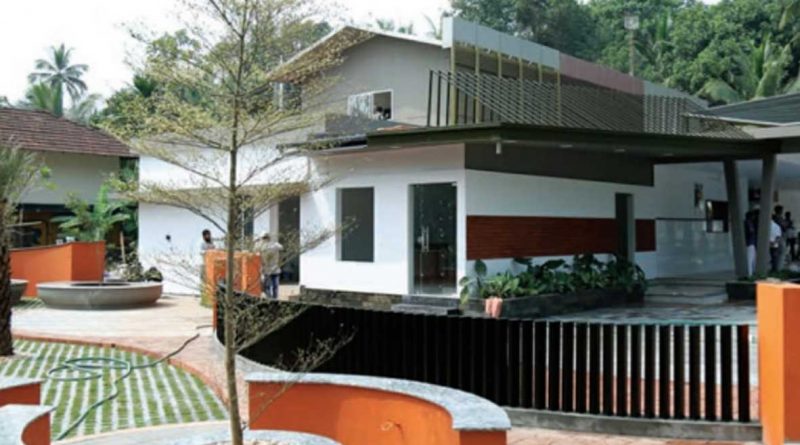Kerala Way Ahead in Community Health Care

Various Community Health Programmes in the State
Our State has gained international attention for best health indices, including low infant and maternal mortality rates. Kerala has been investing and focusing on clean drinking water, better sanitation facilities, roads, and housing projects for ensuring a better quality of life for the citizens. The state’s model of health stresses providing good health based on social welfare, justice, and equity. Higher literacy rates in Kerala, especially the awareness among women as an output of it, play a crucial role in securing the health of each member of a family. They make sure that children receive vaccinations on time, that elders are cared for and maintain overall cleanliness in home and surroundings, and look after the overall wellbeing of the family members, says Dr. Anish T.S., Professor (CAP), Department of Community Medicine, Government Medical College, Manjeri and Nodal officer, Kerala One Health Centre for Nipah Research and Resilience. Citing a report, published in the Lancet on the Value of Death, Dr. Anish adds that Kerala pays more for end-of-life care. “In the last eight years, much has been done to upgrade the infrastructure and basic facilities in all Family Health Centres (FHCs). Kerala State Government sets aside a considerable amount of the Budget for addressing the health concerns of the people. Ardram, the flagship programme of the State Government for achievements in health, uplifted the FHCs and ensured quality facilities, doctors, diagnostics, and medicines,” says Dr. Anish. Those who are economically backward benefit as good quality generic medicines are now available under the KARUNYA scheme.
 Pharmacies in Government Hospitals, FHCs, etc. have now been allotted AC facilities to prevent medicines from getting damaged. This is being done under the supervision of Kerala Medical Services Corporation Limited (KMSCL). Kerala’s unique organisational structure, policies, and programmes keep health at the centre stage of development, says Dr. Indu P.S., HoD, Community Medicine, Government Medical College, Kollam. This, she points out, is one of the reasons why there is a lot of investment in health education and in social sectors. At the FHC-level, ASHA workers have been gathering details about people living in each ward—those living alone, and people who have lifestyle diseases. These details are now getting updated in the ‘Shaili’ App which can be accessed by health officers to understand the health requirements in any given area in the State. The system captures the data of the diabetes and hypertension status of the individuals which help local FHCs to take appropriate actions. Common respiratory diseases and mental health issues are also addressed at local FHC levels through designated clinics named SWAS and ASWAS. We are living in an era where new variants of infectious diseases are cropping up.
Pharmacies in Government Hospitals, FHCs, etc. have now been allotted AC facilities to prevent medicines from getting damaged. This is being done under the supervision of Kerala Medical Services Corporation Limited (KMSCL). Kerala’s unique organisational structure, policies, and programmes keep health at the centre stage of development, says Dr. Indu P.S., HoD, Community Medicine, Government Medical College, Kollam. This, she points out, is one of the reasons why there is a lot of investment in health education and in social sectors. At the FHC-level, ASHA workers have been gathering details about people living in each ward—those living alone, and people who have lifestyle diseases. These details are now getting updated in the ‘Shaili’ App which can be accessed by health officers to understand the health requirements in any given area in the State. The system captures the data of the diabetes and hypertension status of the individuals which help local FHCs to take appropriate actions. Common respiratory diseases and mental health issues are also addressed at local FHC levels through designated clinics named SWAS and ASWAS. We are living in an era where new variants of infectious diseases are cropping up.
The State uses a ‘One Health’ strategy to contain emerging infectious diseases. The strategies are being piloted in the Pampa Basin district as a part of the Rebuild Kerala Initiative. The emergence of antibiotic resistance is another concern. To tackle this, the State has formed an initiative named Kerala Anti-microbial Resistance Strategic Action Plan (KARSAP). As antibiotics enter the food cycle, air, water, and soil get traces of it, thus harbouring microbe variants resistant to the same. We can understand the alarming situation if we analyse the re-emergence of drug-resistant Tuberculosis bacteria (TB) and many other microorganisms, says Dr. Anish. Now, a document, containing details of patient history, diseases and antibiotic drug resistance, is being prepared in most of the big hospitals. This is an Antibiogram that would help find solutions for new resistant disease variants. The State Government has a large section of people utilising BPL facilities. If, for instance, the ration card usage is considered, apart from those using white cards, all fall under the BPL category. So, the State Government will have to find sources to meet expenses of health schemes, to support the BPL category under the Karunya Arogya Suraksha Padhathi.
The Kerala Government had recently introduced VIVA Scheme (‘Vilarchayil Ninnu Valarchayilekku’) to tackle anaemia in women and girls aged between 15 and 59 years. People get updated about various government schemes, for health benefits, through State Government notifications via various media outlets. Kerala has the ‘Sukrutham’ scheme to provide cancer treatment to the needy, the ‘Pariraksha’ Scheme for differently-abled, and ‘Amma Manas’ to address psychiatric disorders among women during pregnancy and post-delivery. This was launched in collaboration with the National Health programme. When the United Nations Organisation had introduced Sustainable Development Goals (SDG), Kerala set goals for the State, based on the data, says Dr. Indu. “Based on the SDG targets of the State, Aardram was designed in a way that health reaches the community. There is involvement of the community and there is involvement of the Local Self Government. This is why in Kerala, almost every component of programmes and policies, within the health sector has direct and indirect community involvement. In addition to this, each SDG target was set based on the data in the State (under Aardram). There is a strong community component within the Aardram phase itself.
This can be understood better if we analyse the documents linked to the initial Aardram project,” adds Dr. Indu. Kerala is a State where there is the highest-level community-level participation in deciding various projects that would benefit from the grassroots level. It has the participation of the Local Self Government. “Decentralised planning is best designed in such a way that benefits are reflected in the health sector,” adds Dr. Indu. Several programmes of the Local Self Government directly benefit the health sector. The nutritional programmes of the Women and Child Department and Social Justice Department showcase strong inter-sectoral coordination. For instance, nutrition supplementation through Anganwadis reaches children, women of reproductive age, and lactating women, adding to the national framework. Additionally, under the Aardram Scheme, the State Government is enhancing government hospitals by upgrading Primary and Family Health Centres to improve infrastructure and service quality, making them more people-friendly.


